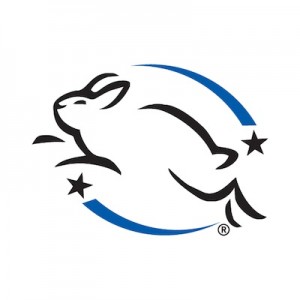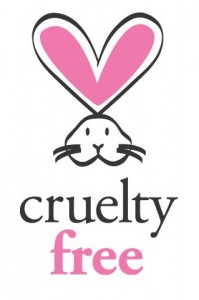Vegan beauty and bodycare shopping can be tricky. But there are ways to make it easier. If you stare blankly down the “naturals” isle of the drug store or veer your cart in the opposite direction of the cosmetics at your holistic grocer, then it’s time to face those fears! With the right knowledge, you can be on your way to compassionate, vegan consumption by way of shampoo, make-up, lotion, and even common over-the-counter meds!
Get Prepared
While you need to be informed, it is impossible for you to know everything about the ingredients used in your products. Thankfully, there’s an app for that! Leaping Bunny has a free app for iPhone and Android which lists companies and their cruelty-free status. This is a great and easy place to start.
My favorite app, however, is one called Animal-free. This is a comprehensive list of hundreds of ingredients used in bodycare products. It tells you if it is toxic or animal-derived, what the ingredient actually is and does for your body, and if a vegan alternative source exists. I check every ingredient through this resource. No smartphone? A piece of paper in your wallet will do just fine! Make a list of some of the most common animal ingredients in products, like cetyl alcohol, so you can avoid them when you get to the store (see The Ethical Girl’s Guide for an easy reference list on page 23).
Look for the Bunnies
 Consumers are becoming more conscious of how their purchases affect the earth. On the flip side, almost any company can–and does–put “Not tested on animals” on the back of its products even if it is not worthy of cruelty-free status. Since you cannot rely on this four word phrase, you will need to look out for a couple key indicators.
Consumers are becoming more conscious of how their purchases affect the earth. On the flip side, almost any company can–and does–put “Not tested on animals” on the back of its products even if it is not worthy of cruelty-free status. Since you cannot rely on this four word phrase, you will need to look out for a couple key indicators.
The Leaping Bunny is the symbol placed on cruelty-free products regulated by the Coalition for Consumer Information on Cosmetics, CCIC. Companies receive the Leaping Bunny stamp of approval by voluntarily applying to be part of the program and  complying with certain regulations that deem them cruelty-free. The Leaping Bunny conducts independent third-party audits on these companies to make sure they are in compliance with CCIC cruelty-free standards. While a great number of Leaping Bunny approved products are both cruelty-free and vegan, the logo does not imply this. The Leaping Bunny logo is a great indicator, but you also need to read the ingredients as some may still be animal derived. You must also be aware of parent company policies. The Leaping Bunny website and app for iPhone and Android have a comprehensive list of companies and their cruelty-free status. On this list, you can see if a cruelty-free company is part of a parent company that does not comply with Leaping Bunny standards. However, if you do not have a smartphone and have not remembered the companies, you might make a selection of Leaping Bunny approved product, like Burt’s Bees, and unknowingly support the animal cruelty and lack of environmental sustainability of the Clorox Company.
complying with certain regulations that deem them cruelty-free. The Leaping Bunny conducts independent third-party audits on these companies to make sure they are in compliance with CCIC cruelty-free standards. While a great number of Leaping Bunny approved products are both cruelty-free and vegan, the logo does not imply this. The Leaping Bunny logo is a great indicator, but you also need to read the ingredients as some may still be animal derived. You must also be aware of parent company policies. The Leaping Bunny website and app for iPhone and Android have a comprehensive list of companies and their cruelty-free status. On this list, you can see if a cruelty-free company is part of a parent company that does not comply with Leaping Bunny standards. However, if you do not have a smartphone and have not remembered the companies, you might make a selection of Leaping Bunny approved product, like Burt’s Bees, and unknowingly support the animal cruelty and lack of environmental sustainability of the Clorox Company.
The Caring Consumer symbol is regulated by PETA. Companies initiate the relationship with PETA to get the symbol on their products. The Caring Consumer bunny always means that your product is cruelty-free but you cannot rely on spotting it to know whether the product is vegan. A variety of cruelty-free, Caring Consumer-approved products are still made with common animal fats. Thankfully, PETA is watching out for all us vegans! They recognized the difference in ingredient make up for vegans and non-vegans. The Caring Consumer bunny will always appear with the words cruelty-free underneath; however many vegan products will say “cruelty-free and vegan” below the bunny emblem. This guarantees that you can skip out on reading the ingredient list. That being said, I have found many Caring Consumer products that do not say “vegan” but, in fact, have no animal-derived ingredients. Similar to the Leaping Bunny, parent companies are still a problem for PETA’s symbol. It is your own choice, but you should be aware that buying vegan does not always mean that you are supporting vegan-only business initiatives.
And of course there are politics involved in acquiring the cruelty-free symbols. There is a lack of standardized regulation in the bodycare and beauty industry, so many smaller labels or local brands might not be approved by the Leaping Bunny or PETA. Your best bet is always to come prepared to read labels and search for the word “vegan.” If you think your favorite product is vegan but it doesn’t say so on the label, I encourage you to write the company an email explaining the benefits of putting that five letter word on the packaging!
No Need to Shop Somewhere Special.
You can shop just about anywhere this stuff is sold, but your selection will be radically different. Big chain grocery retailers usually have a “naturals” section that is chock-full of the products with non-complying parent companies. But you should be able to find a couple cruelty-free, organic products, or maybe even a local name. I generally recommend avoiding these grocers for your bodycare; but if it is the only place you have access to, be prepared to do a lot of reading. Drug stores, Whole Foods, and Organic Grocers are much better about housing a larger organics section, carrying local companies and lesser known brands. This is generally where I go for my products. Another new trend is primarily organic, cruelty-free bodycare shops, like Pharmaca. While these are very fancy and appealing, I find them to be a bit pricier. And of course you can go online and buy. This is the route I recommend once you have a product that you know you love. I am in love with Nature’s Gate Creme de Peppermint Toothpaste, so I buy it online. The money goes right to them, rather than through a distributor. Basically, you can buy these products any place that you would normally shop for bodycare. They might be tucked on the bottom shelf or at the end of the aisle, but they are there just waiting to pamper your vegan self.
Make the Transition
Veganism is a lifestyle choice. Your efforts to be a compassionate, ethical individual will not always be perfect, and that is ok. I recently came home with a Yes To Tomatoes facial scrub–which has the PETA cruelty-free bunny on in–only to notice that the second ingredient listed is stearic acid, an animal fat! But now I know that the Yes To products are cruelty-free but not vegan, and I will make a better selection next time. Being a conscious consumer is difficult because there are so many walls between the company and the customer. Ethical selections must incorporate vegan and organic practices while also focusing on companies which support anti-trafficking policies and worker’s rights. With just a little bit of research you can give your skin, hair, and body the vegan care it deserves.
A Final Thought.
Have a lot of beauty and bodycare products that aren’t vegan but you don’t want to waste? Shelter’s LOVE these donations! Gently used or unopened bodycare products, apart from deodorant and toothpaste, never end up on the “urgent needs” list and thus never get donated. Find your local battered women’s shelter or homeless youth shelter and bring over some stuff. You wouldn’t believe how excited they get for the novelties of nail polish and fragrance mist. If you set up a relationship with the donations manager, they might even be willing to accept any slightly used vegan products you try and do not particularly like.

Laura, your post is amazing! Im a new vegan and enjoy reading these posts! Would be great to stay in contact!
Great post Laura. I didn’t know about those apps, thanks!
For Aussies, there’s Choose Cruelty Free’s List – you can see the list on their website and they also have an iPhone/iPad/Android app available. http://www.choosecrueltyfree.org.au/cruelty-free-list/just-vegan
I thought Cetyl Alcohol came from oils like coconut and palm. When/where does it come from animals?
Great question, April! Honestly, this is one of the most frustrating aspects of the beauty industry; product ingredients derived from animals and plants can have the same name due to their chemical make-up. Cetyl alcohol is one such ingredient, coming from oily plant sources, like coconut, or the blubber of mammals, like whales. Cetyl alcohol is a frequently used oil to provide thickness in moisturizing products. While many organic/natural cosmetics will utilize vegetable-derived cetyl alcohol, you can never be too sure with the ambiguous labels. The beauty company that I worked for used animal-derived cetyl alcohol in every one of their skin moisturizers, shower creams, and conditioners. As a rule of thumb, this is one of the ingredients I avoid unless the label specifies its vegetable source or is strictly vegan.
Thanks, Megan! I’m glad you found it helpful, and would love to be in contact further regarding the beauty industry.
Very imformative! I’m replacing my beatuy products with vegan, cruelty-free ones so I can use this info. One question about Yes To: I read on wikipedia that steric acid got its name from the original ingredients (tallow) but can also be made from vegetable olis. Does Yes To use animal or vegetable sources in its product?
Hi Jean! For more information about Yes to, you can contact them via this link http://www.yestocarrots.com/customer-service-ask-the-experts.html